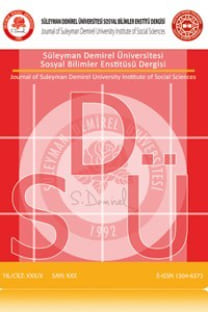AVOIDANCE STRATEGY IN FOREIGN LANGUAGE PRODUCTION
Avoidance, learning strategies, second language acquisition, writing
AVOIDANCE STRATEGY IN FOREIGN LANGUAGE PRODUCTION
Avoidance, learning strategies, second language acquisition, writing,
___
- Alexander, L. G. (1967). Developing Skills: An integrated course for intermediate students. London: Longman. Alonso Vázquez, C. M. (2005). Avoidance as a Learning Strategy, Estudios Ingleses de la Universidad Complutense, Vol.13, 67-83. Blum, S. and Levenston, E.A. (1978) Universals of lexical simplification, Language Learning, 28, 399-415. Chen, J. (2007). On how to solve the problem of the avoidance of phrasal verbs in the Chinese context, International Education Journal, 8 (2), 348- 353.
- Cook, V., Long, J. and McDonough, S. (1979). First and Second Language Learning, In G. E. Perren (ed.) The Mother Tongue and Other Languages in Education, CILTR (Retrieved from http://homepage.ntlworld.com/vivian.c/Writings/Papers/L1&l21979. htm01.04. 2014). Corder, S.P. (1978). Strategies of Communication (In Claus Faerch and Gabriele Kasper (Eds.) 1983. Strategies in Interlanguage Communication (pp. 15- 19). New York: Longman. Erwin; G. (1979); Communication strategies employed by American students of Russian. Modern Language Journal 13:4, 329-334. Færch, C. and Kasper, G (1983) Plans and strategies in foreign language communication. In C. Færch and G. Kasper (eds.) Strategies in Interlanguage Communication. (pp.20-60). Harlow,UK: Longman
- Hulstijn, J. H. and Marchena, E. (1989). Avoidance: Grammatical or Semantic Causes? Studies in Second Language Acquisition, 11, 241-255. Kellerman, E., Bongaerts, T., & Poulisse, N. (1987). Strategy and system in L2 referential communication. In R. Ellis (Ed.), Second language acquisition in context. (pp.100-112), New York: Harper and Row. Lin, G. H. C. (2013). Revealing the effectiveness of communication strategies, Paper presented in the 8th ELT Conference of AFL, CYUT, Taiwan. Maleki, A. (2010). Techniques to teach Communication Strategies. Journal of Language Teaching and Research. Vol. 1, No.5, 640-646.
- Poulisse, N. (1993). A theoretical account of lexical communication strategies. Studies in Bilingualism 6, 157-198. Schachter, J. (1974). An error in error analysis. Language Learning, 24, 205- 214.
- Tarone, E. (1977). Conscious communication strategies in interlanguage: A progress report. TESOL, 77, 194-203. Taron, E. (1980) Communication Strategies, Foreigner talk and repair in interlanguage? Language learning 30, 417-413. Varadi, T. (1980) “Strategies of Target Language Learner Communication: Message Adjustment”. International Review of Applied Linguistics 18, 59-71.
- Varadi, Y. (1983). Strategies of target language learner communication: message- adjustment. In C. Faerch, & G. Kasper (Eds.), Strategies in interlanguage communication (pp. 61-74). New York: Longman.
- Yayın Aralığı: Yılda 3 Sayı
- Başlangıç: 2005
- Yayıncı: Süleyman Demirel Üniversitesi
TÜRKİYE’DE KAYIT DIŞI EKONOMİNİN BOYUTLARI
Bekir Sami OGUZTURK, Ertuğrul Kutay ÜNAL
SUSTURULMUŞUN GÜÇLÜ SESİ: VİKTORYEN SAPPHO (SAFO)’NUN EDEBİ RESMİ
KOLEKTİF ve BİREYSEL KİMLİKLER BAĞLAMINDA SOSYAL BÜTÜNLEŞME
SINIF YÖNETİMİ BOYUTLARINA GÖRE BİLGİSAYAR LABORATUVARLARINDA KARŞILAŞILAN SINIF YÖNETİMİ SORUNLARI
GÜNÜMÜZ SİYASAL GÜNDEMİNİN ANA AKTÖRÜ OLARAK KOLEKTİF KİMLİKLERİN SOSYO-POLİTİK ANALİZİ
Pınar GÖKTAŞ, Fıras İmad Ali AL SHUBAKI
